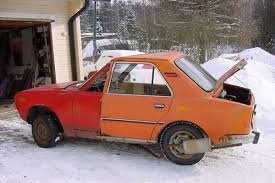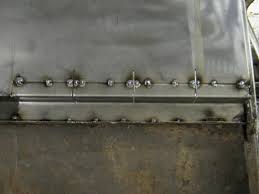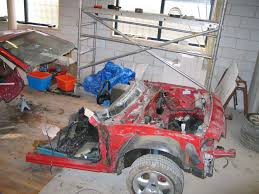We’ve all heard the warnings over the influx of cars into Ireland from the UK which have been previously written off. Now, there is a level at which a written-off car can be fine, as long as it is sold as such, above-board and honestly. Equally, there are those who scoff at the idea of written-off cars being a problem at all, and usually complain that people are being forced to write-off their cars by supposedly unscrupulous insurance companies. These are usually the same people who will then go on to say that there is nothing wrong with second hand or remoulded tyres…
Of course, the dangers are very real, and all part of the reason as to why it’s so important that you get a proper history check carried out on a car you’re looking at buying. And even in this day and age, it’s still possible to get landed with a dreaded ‘cut-and-shut’ car…
What is ‘cut-and-shut’?
 Cut-and-shut is a write off type that refers to the practice of taking two mechanically identical cars, one of which has been involved in a heavy frontal accident and the other in a rear-ender. Simply cut the good ends of each car off and weld them together and you’ve turned two bad cars into one good one. Nothing wrong with that, right?
Cut-and-shut is a write off type that refers to the practice of taking two mechanically identical cars, one of which has been involved in a heavy frontal accident and the other in a rear-ender. Simply cut the good ends of each car off and weld them together and you’ve turned two bad cars into one good one. Nothing wrong with that, right?
Wrong. For a start, it’s almost certain that each original car will have been a write-off and a sufficiently serious write-off to have been in Category C or D, where the car can never be legally used again. So are cut and shut cars illegal? Yes. Secondly, there is no guarantee that the welding work carried out has been of a high standard. In fact, given the illegal nature of cut-and-shuts, it’s generally carried out to no standard at all, and the cars are shockingly dangerous and unsafe to drive.
Is this still prevalent?
 It sounds like something from the dark days of the seventies when cars were simpler and garages perhaps less scrupulous, but it’s not – experts estimate that there are as many as 30,000 cars in the UK which have been cut-and-shut, so your chances of coming across one are worryingly high.
It sounds like something from the dark days of the seventies when cars were simpler and garages perhaps less scrupulous, but it’s not – experts estimate that there are as many as 30,000 cars in the UK which have been cut-and-shut, so your chances of coming across one are worryingly high.
So, how can you avoid one? Well, obviously there’s the need to do a history check, which should at least flag up the write-off, and which should give you reason enough to walk away. Of course, a write-off can be hidden or disguised, but a history check is the best place to start.
Actually, you can start before you even get as far as the history check – just look at the advert for the car. Is the price amazingly low? Are the photos used grainy and indistinct, or even a ‘file photo’ of a similar car? Be suspicious, especially of the price; as ever, if a deal looks too good to be true, it probably is.
Next, be careful about how and where you view the car. You need to check out a car outdoors, in natural light. Viewings in multi-storey car parks are to be avoided, as are as much as is possible in the Irish climate viewing in the rain, as the water and the lack of light mean you will find it harder to sniff out the cut-and-shut.
How to identify an issue
 The place to check is usually at the point where the back end of the roof meets the glass and the rear pillar. Most cars will have a major join or panel seam here, and the skilled cut-and-shutter can use that to their advantage. Poke around inside the boot (under the carpet of course) and under the hatch of a hatchback car – you’re looking for uneven lines, poor welding jobs, changes in paint colour or shade.
The place to check is usually at the point where the back end of the roof meets the glass and the rear pillar. Most cars will have a major join or panel seam here, and the skilled cut-and-shutter can use that to their advantage. Poke around inside the boot (under the carpet of course) and under the hatch of a hatchback car – you’re looking for uneven lines, poor welding jobs, changes in paint colour or shade.
Next, check the car’s VIN number against whatever paperwork you’re being shown. Do the numbers match up? Check inside the car for different seat trims at the front and rear, or different shades of colour on the door trims. A skilled cut-and-shutter will try to hide these tell-tales, but changing a car’s interior is an expensive job, so they may have taken shortcuts, hoping you won’t notice.
Finally, of course, check the seller themselves. Are they open, friendly, courteous and eager to answer questions? Or are the furtive and evasive, and constantly finding excuses for missing paperwork or history.
Cut-and-shut cars have become perhaps more rare than once they were, but like most unscrupulous motor trade practices, they haven’t gone away entirely. Make sure you don’t end up buying one and always keep an eye on a car’s history.